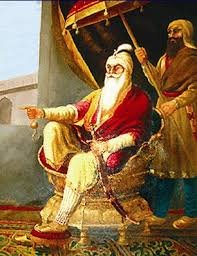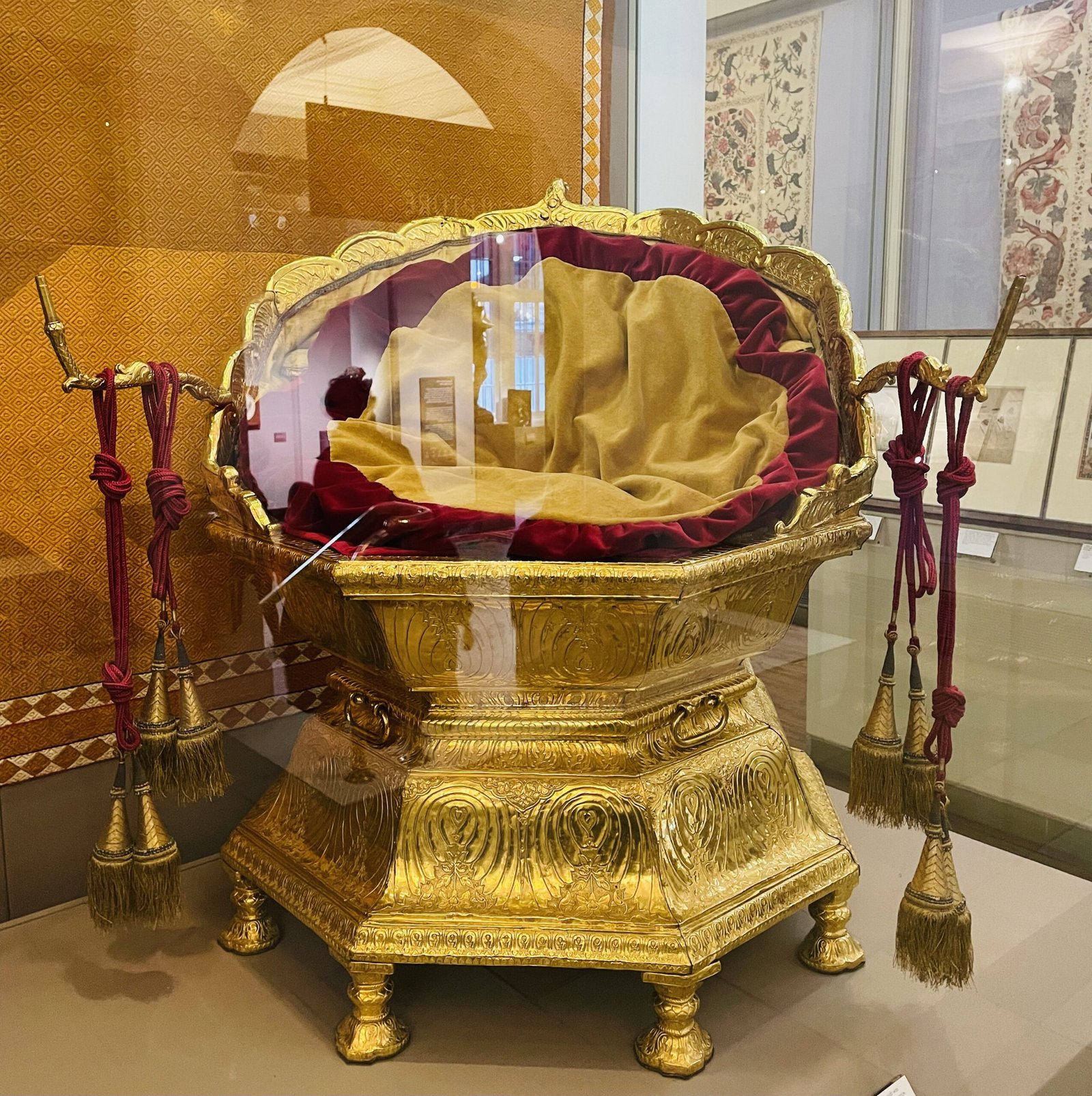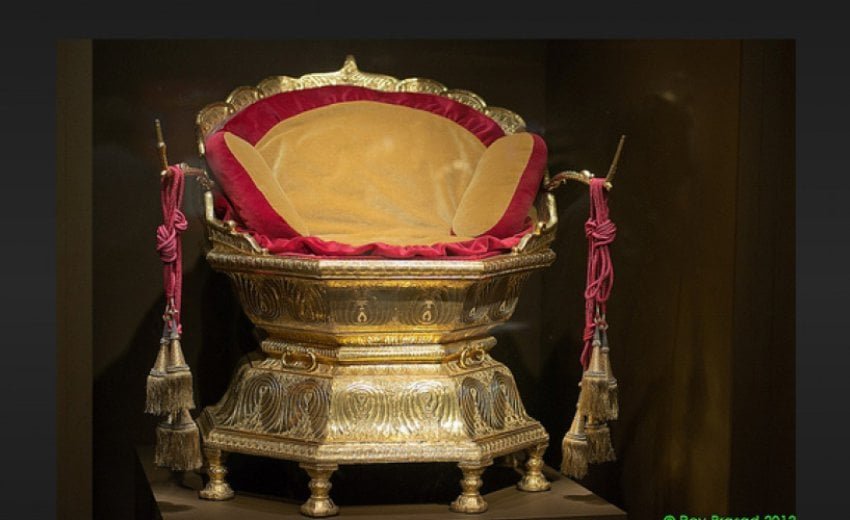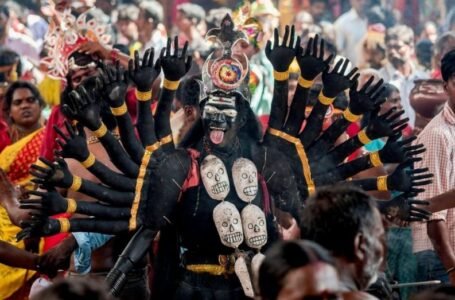The Lion’s Seat: Maharaja Ranjit Singh’s Throne and The Apex of Sikh Empire

The Lion’s Seat: Maharaja Ranjit Singh’s Throne and The Apex of Sikh Empire
The founder and the leader of Sikh Empire in the early 19th century famously known as the lion of Punjab, Maharaja Ranjit Singh. A fascinating historical figure remembered for his military powers who was able to establish a strong kingdom in the northwest region of India. He was the first Indian to return the invaders, the Pashtuns [Afghans] into their homeland and hence was rightly called the lion for the same. Now, picture a seat with immense power, covered in gold showcasing the weight and prosperity of the region. This magnificent throne belongs to Maharaja Ranjit Singh which goes on to becoming a dazzling center of attraction in the narrative of the leader who changed the landscape of politics of his time. His bold move of capturing Lahore, the capital of Punjab [now in Pakistan] in 1799 solidified his position as the de-facto ruler and was acknowledged by the afghan ruler, Zaman Shah as the governor of Lahore but his ambitions moved beyond being a mere governor.

A few years later in 1899 he went on to declare himself as the maharaja of the entire Punjab region. He did not stop after this victory, he went on to seize Amritsar, a city very important for the northern region and along with that sacred to the Sikh community. This was just the beginning of his powerful and strategic reign as he united all the smaller Sikh and Pashtun community that was scattered around the region. His legacy goes beyond the realm of politics and military skills, he was also a notable patron of the art. He even employed various artisans from Kashmir, which contributed to a flourishing artistic landscape.

The Sheesh Mahal in Lahore, the palace where he resided was decorated with captivating murals and frescoes. Other than that, the infamous Golden temple in Amritsar underwent a magnificent gold makeover under his rule which enhanced its sacred beauty. This showcased his dedication for the religion. Along with the enhancement of the temple, he made sure that his back never turned towards the golden temple. It symbolizes his profound respect for the holy temple, and it also reflects his efforts to integrate Sikh values into his daily life and even in the lives of his people. He was committed to the Sikh culture which was reflected in his efforts to new modifications of Guru Granth Sahib, the holy scripture of the Sikhs.

This modification initiative for spiritual heritage mirrored his dedication to the education system of Punjab which left a lasting impact. His support and motivation for arts and education had two major effects, firstly it enriched the cultural tapestry of Sikh empire and secondly, it solidified his legacy as a leader with comprehensive vision for his people.
The richness of his region is reflected in the magnanimous throne that is intricately decorated with gold. However, Maharaj Ranjit Singh was a simple man and had a modest personal style. He often did not indulge in showcasing wealth and power. The year 1818 was an important year in the history of Sikh as the Multans succumbed to the power of Sikh, which promoted the commissioning of the grand throne to celebrate this significant event. Even though the throne is originally linked to Lahore, it was then discovered in the year 1849 after the British took over the Punjab and the control of the royal treasury.

Talking about the throne, it was made by Hafez Muhammed Multani who was a goldsmith. The construction of the throne reveals great craftsmanship. It consists of a combination of wood and resin which provides a strong foundation for the throne. On the exterior, gold sheets are place meticulously which not only adds a layer of grandeur to the throne but also showcases the skillful artistry that was used to create this masterpiece. Talking about its unique design which features a base including two layers of lotus petals, these petals symbolize purity and creation. According to various traditions, thrones with lotus have been reserved as seats for Hindu gods, thus adding a cultural and spiritual significance to Maharaja Ranjit Singh’s royal throne.

However, despite the royal nature of the throne, the Maharaja rarely used it. His aversion to elaborate ceremonies was a reason that led him to sit cross-legged on the carpets. This emphasized simplicity over the extravagance associated with the traditional royal seating. His nuanced approach to the throne reflects cultural symbolism that is embedded in its design and also the Maharaja’s humility and practicality.
The Mughal empire weakened after the death of Aurangzeb in 1707, and could not govern and tax most of the Indian subcontinent. Thus, the Khalsa community gained strength and begin occupying the northwest region of India which included parts of Pakistan and Punjab. Even though there were internal conflicts between the Sikh community they were always united against external threats. In the battle of Amritsar, 1798 Maharaja Ranjit Singh successfully resisted the afghan army by showcasing his strategic skills. Further, he even went on to conquer Lahore, where he was welcomed whole heartedly.

Slowly, he took over major parts of the northern region and was known as Sarkar Khalsa and to mark his rule he even issued a coin under Guru Nanak’s name called Nanakshahi. His reign also witnessed cultural harmony as he welcomed all the religions. Prayers took place in mosques, temples and gurudwaras during his rule. As mentioned, he even played an important role in uniting the Sikh community when internal conflicts were prevalent. He skillfully formed alliances and treaties with neighboring regions which helped in creating a stable political environment and also fostered sense of unity among Sikhs. His administration included reforms that helped in creating a cohesive and effective governance and his policies even contributed in the overall well-being of the community.

The Sikh empire has witnessed numerous conquest and tributary collections, thus collecting great wealth for the empire. His treasuries in Lahore and Amritsar became rich depositaries not just for the loot after the conquest by the Britishers but also for the priceless articles that dated back to the era of the Sikh warriors and the Gurus. The governor general, lord Dalhousie was uncertain of the throne’s significance and hence was hesitant to send the throne to Britain. He wrote a letter to London, asking whether the throne would be of some importance to the East India Company and eventually in the year 1853 they decided to preserve this historic piece.
It was sent to Calcutta where its duplicate was made after which it was shipped to the Indian museum in London. The throne finally found its permanent residence in the south Kensington museum, now known as Victoria and Albert museum. However, Punjab was annexed in 1849 when the British took these valuables which included the Golden Throne. These relics which were once integral to the Sikh heritage were now being transported to the UK to be part of the museums. Interestingly, the Koh-i-noor, one of the most prized possession was taken away from the Durrani dynasty of Afghanistan, and it became a symbol of cultural heritage and wealth for the Sikh empire. The diamond was passed to the Jagannath temple in Odisha. Currently, these artifacts stand as bygones of the era and represent the legacy of Maharaja Ranjit Singh and the vibrant history of the Sikh empire. Sadly, in his later years he turned towards alcohol and opium. He died peacefully in his sleep on 27TH of June, 1839 and all that was left behind was his legacy. He was remembered for his military conquests, the creation of Khalsa army and lastly the gathering of a considerable wealth.

With a remarkable reign and much more iconic throne, Maharaj Ranjit Singh became a visionary leader in the northwest kingdom of the Indian subcontinent. His golden throne stands as a symbol of glory and regality. It represents purity but also tells us a lot about Maharaja’s simple nature. His history that includes strategic achievements, his love for arts, his religious tolerance and his splendid administration resulted in the cultural and political flourishing of the Sikh empire. The narrative around the golden throne and its present state serves as a testament to the wealth and their cultural heritage. His glorified rule that begin from the decline of Mughal empire and establishing a solid base for his community marks as a great historic achievement for the Sikhs.

As a tribute to his excellence, a 22 feet tall statue of the Maharaja was installed in the parliament of India. It does not stop here, as his statues can be found in various parts of India, Pakistan and even in the French town called St. Topez. This widespread recognition of Maharaja’s legacy reflects his global importance and how his rule had severe impacts on different regions. His influence has left an irreplaceable mark on the historical narrative of the Sikh empire and even the Indian subcontinent. However, the challenges of succession had created problems after he died and thus his rule saw an eventual end in the 19th century.


